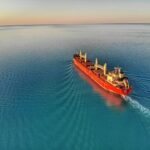The earth as we know it has more water than land. In fact, the ocean covers more than 70% of the planet’s surface that it’s easy to assume that it has unlimited resources.
The problem with plastic waste has long been a cause of debate for many countries around the world. But while several efforts have been made to help lessen the world’s waste, hundreds of sharks and rays are still dying.
Currently, 316 million plastic drink stirrers, 4.7 billion plastic straws and 1.8 billion plastic-stemmed cotton buds are used in England each year. But starting April 2020, the government plans to eradicate the usage of these plastic products by restricting their availability.
It all started with a documentary called “Chasing Coral” where a team from The Ocean Agency was able to film an extraordinary site in New Caledonia’s coral reef. The corals looked like they were glowing, but their rare vibrant colours weren’t because they were beautiful. It was a sign that they were dying.
In 2018, no whale calves were spotted in their breeding ground off the Florida and Georgia coasts. It wasn't until the end of December when the first calf was spotted and a total of 7 more were seen afterward.
A fishing charter that works just off of the coast of New Zealand got a life-changing experience as they found themselves dealing with a Great White Shark.
















